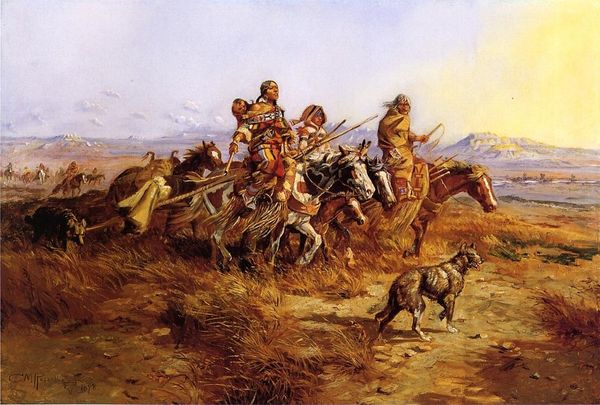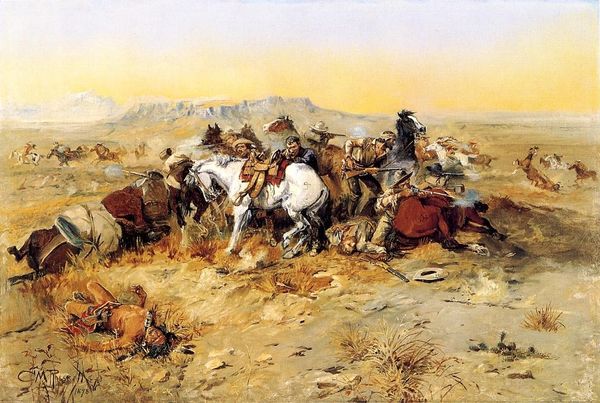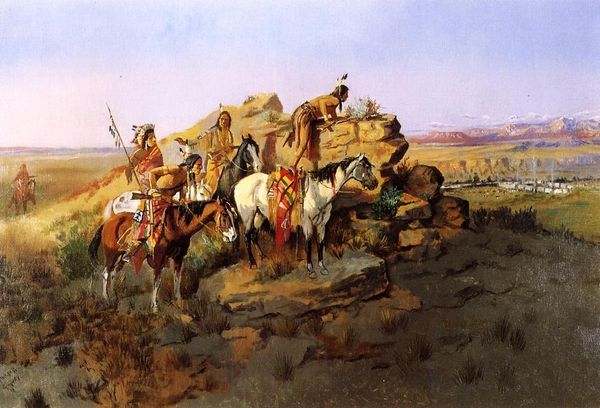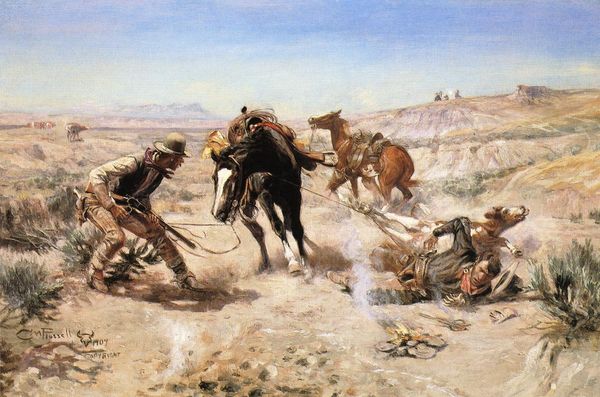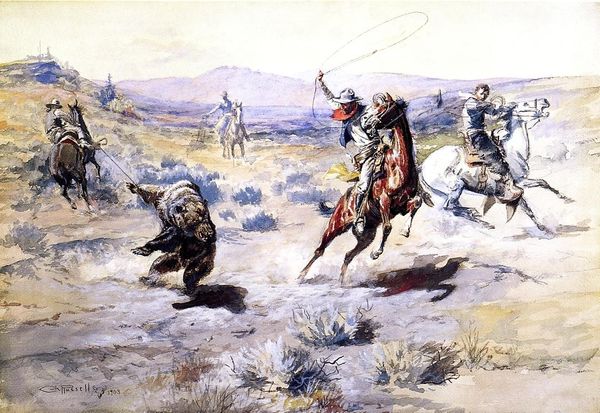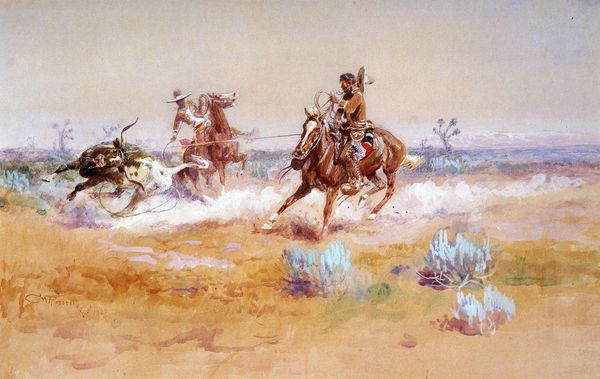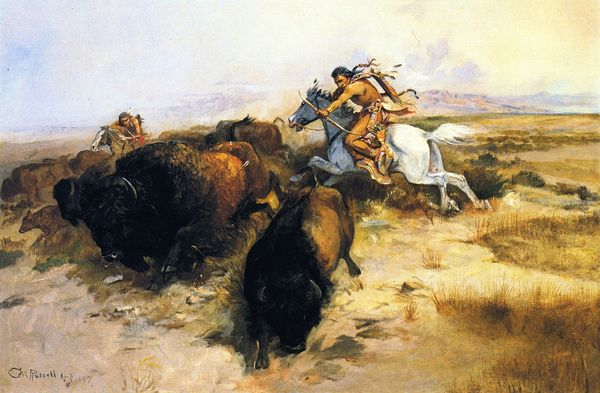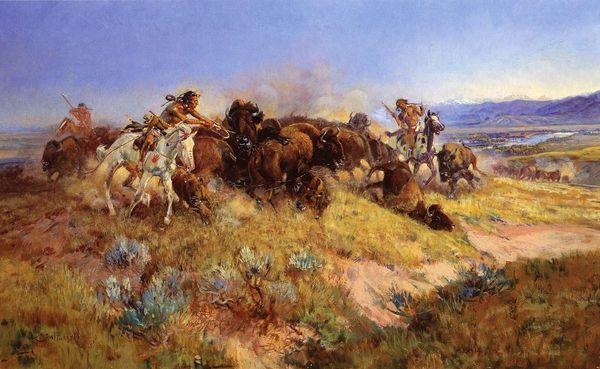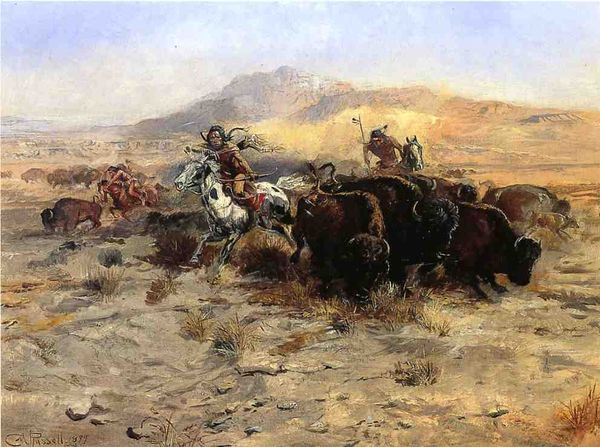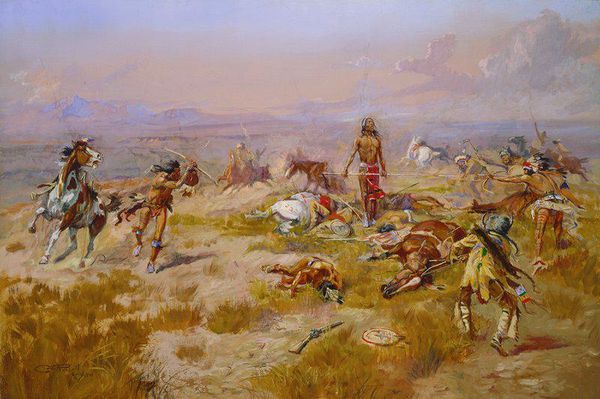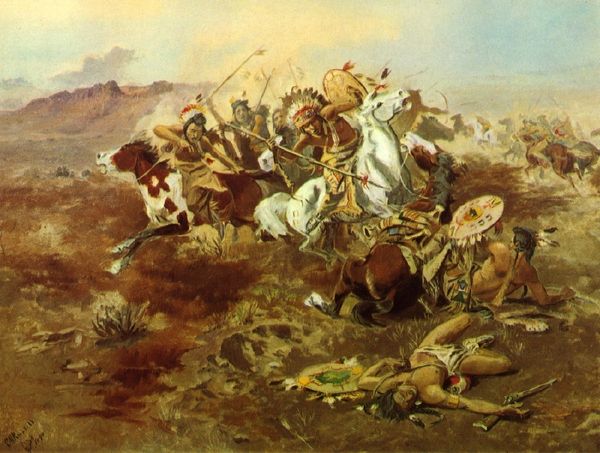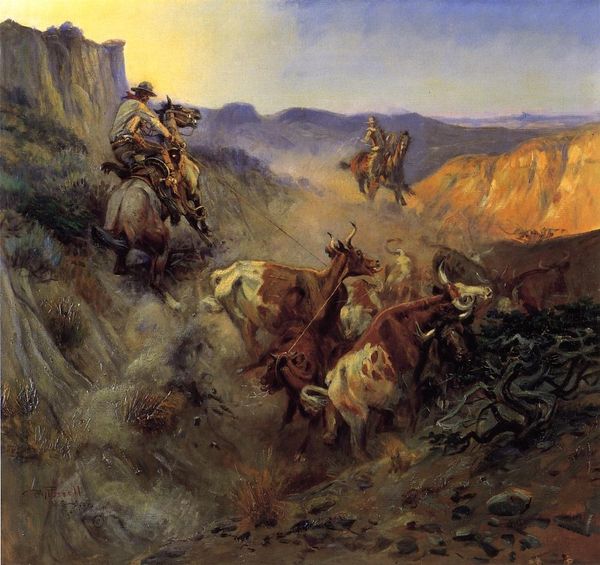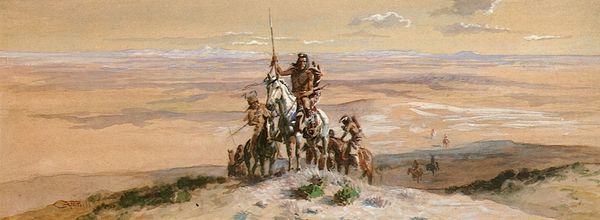
Copyright: Public domain
Curator: The energy radiating from Charles M. Russell’s "The Broken Rope" is immediate, isn't it? A chaotic scene unfolding. Editor: Absolutely. The scene feels frantic. There's something quite visceral about it, like witnessing an intense moment of struggle in real-time. It evokes a sense of vulnerability too, a moment of disrupted mastery. Curator: This oil painting from 1904 plunges us into the world of cowboys attempting to wrangle a steer. It is part of the early twentieth-century genre of painting that romanticized the rugged west, yet Russell's understanding of that era provides a very keen context of how the men and animals survived. Editor: The broken rope itself— what does it signify? Is it just a simple depiction of a failed attempt or could it be interpreted as a metaphor for broken promises, failed endeavors, or even the fragility of control, human or otherwise, in the face of untamed nature? The steer embodies a powerful disruption of human intent. Curator: I see the rope's break as a critical juncture where notions of rugged individualism clash against the realities of communal dependency. Think about the historical context: as the frontier closed, the cowboy figure had to evolve to fit shifting narratives. The lasso—typically a symbol of masculine authority— fails, leaving the cowboy vulnerable. Also, notice the hats strewn about the arena as if to further depict discarded power in the disarray of a once ordered place. Editor: The animal certainly overwhelms. The fallen cowboy, attempting to tie up the steer, could signify many challenges to both literal and symbolic masculine identity. And there are many cowboy figures around to further emphasize the many interpretations, even including ones of homoerotic nature. Curator: Russell seems aware of the myths being constructed around the cowboy figure, as well as their real lives and challenges. The romantic idealism has given way to academic, even natural realism and a more profound analysis that incorporates intersectionality of work, cultural symbolism, identity and gendered norms. Editor: Russell captured this clash with dynamic brushstrokes. I sense a commentary on the mythos and lived realities, making its symbols and themes feel very contemporary, indeed. It provides so much for analysis beyond cowboys, land, and the west. Curator: Precisely. It resonates far beyond its surface narrative. The raw encounter captures our attention— it demands we examine broader social relationships and power structures in contemporary settings. Editor: Ultimately, I agree that “The Broken Rope” is much more than just cowboys and cattle, because, through symbol, art continues to engage new viewers and sustain multiple readings that ripple outwards across contexts, just as history demands.
Comments
No comments
Be the first to comment and join the conversation on the ultimate creative platform.
